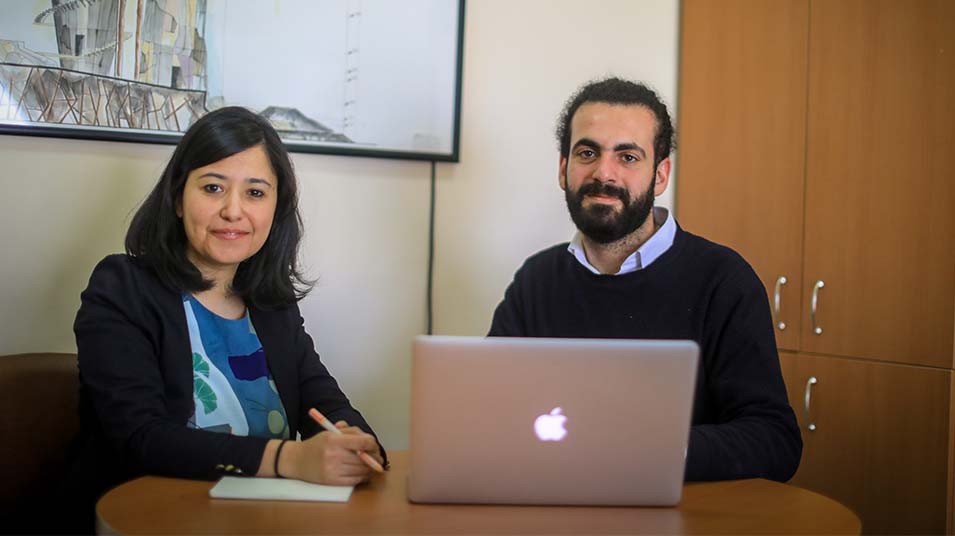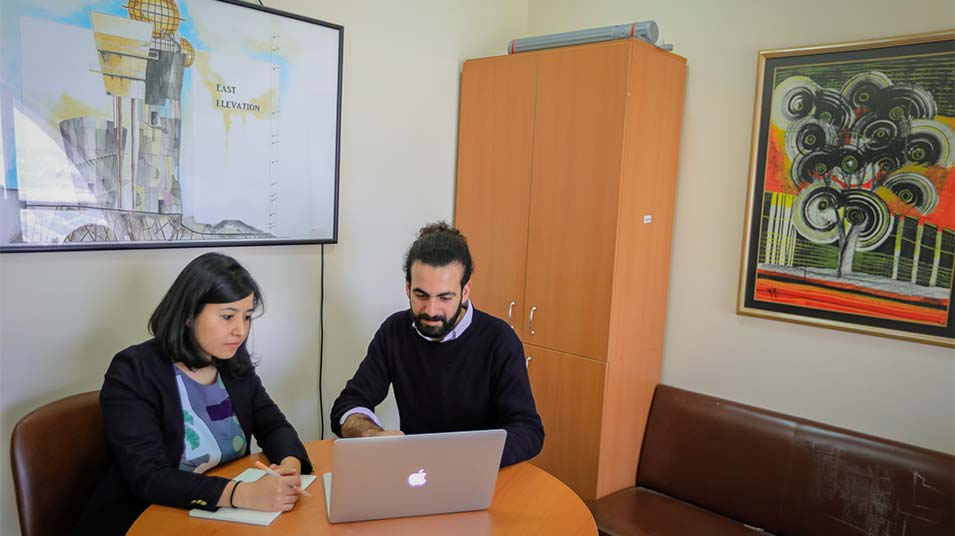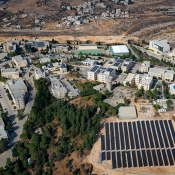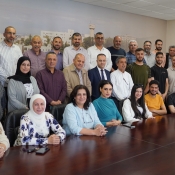Students analyze relationship between space and structures through the lens of cinema
Film and Architecture, one of the newest courses offered by the Department of Architectural Engineering at Birzeit University, examines the interaction between cinema and architecture in an interactive approach that prompts students to analyze architectural notions and concepts that emerge in films screened during the course.
While the course was first offered in the 2018/19 fall semester, the concept behind it − group discussions on dynamics in architecture and filmmaking − was conceived and refined in numerous informal sessions by Lana Naser and Mohammed Abualrob, instructors in the Department of Architectural Engineering and the course’s main architects.
“In 2016, we began to hold informal conversation and discussion sessions on the role of architecture and urbanism in films,” Naser and Abualrob explained. “These gatherings were not exclusive to architecture or film experts; everyone was welcome to attend and share their thoughts.”
The notion of interdisciplinarity served as one of the main tenets of the academic offering, noted the instructors who aimed to create an atmosphere of openness and to allow students from all majors to participate. “Visual media offer the same information to everyone. As the viewer, you must process that information through your own personal experience and knowledge,” Abualrob said.
Whereas the architecture department’s academic plan has offered a course that bridges film and architecture in the past, Naser and Abualrob developed and presented this course for the first time. It introduces cinema as an analytical tool to explore and understand the built environment. To present students with twenty-first century knowledge, the instructors consulted with film experts, both local and international. They took inspiration from similar courses offered by renowned international universities but adapted and refined its content to better fit Palestinian and Arab contexts.
Describing the structure of the course, Naser pointed out that student-led discussions are one of the main driving forces of its syllabus. “The course is split into two weekly lectures. Usually, one is dedicated to screening either film excerpts or an entire film, while the other lecture consists of student-led discussions and utilizes a variety of mediums. Generally, students are asked to present and support their arguments through text- or visual-based documentation of their analyses.”
“Instructors foster student-led discussions and tend to minimize their own input; we only intervene to steer the discussion back to track or to emphasize a point the students have brought up,” Naser added, noting that a variety of teaching aids and tools are employed, depending on and suitable to the specific topic at hand.
Naser and Abualrob aim to develop new pedagogical methodologies that will allow students to engage more deeply with the learning process and are working towards establishing an interdisciplinary hub within the university in the near future.








